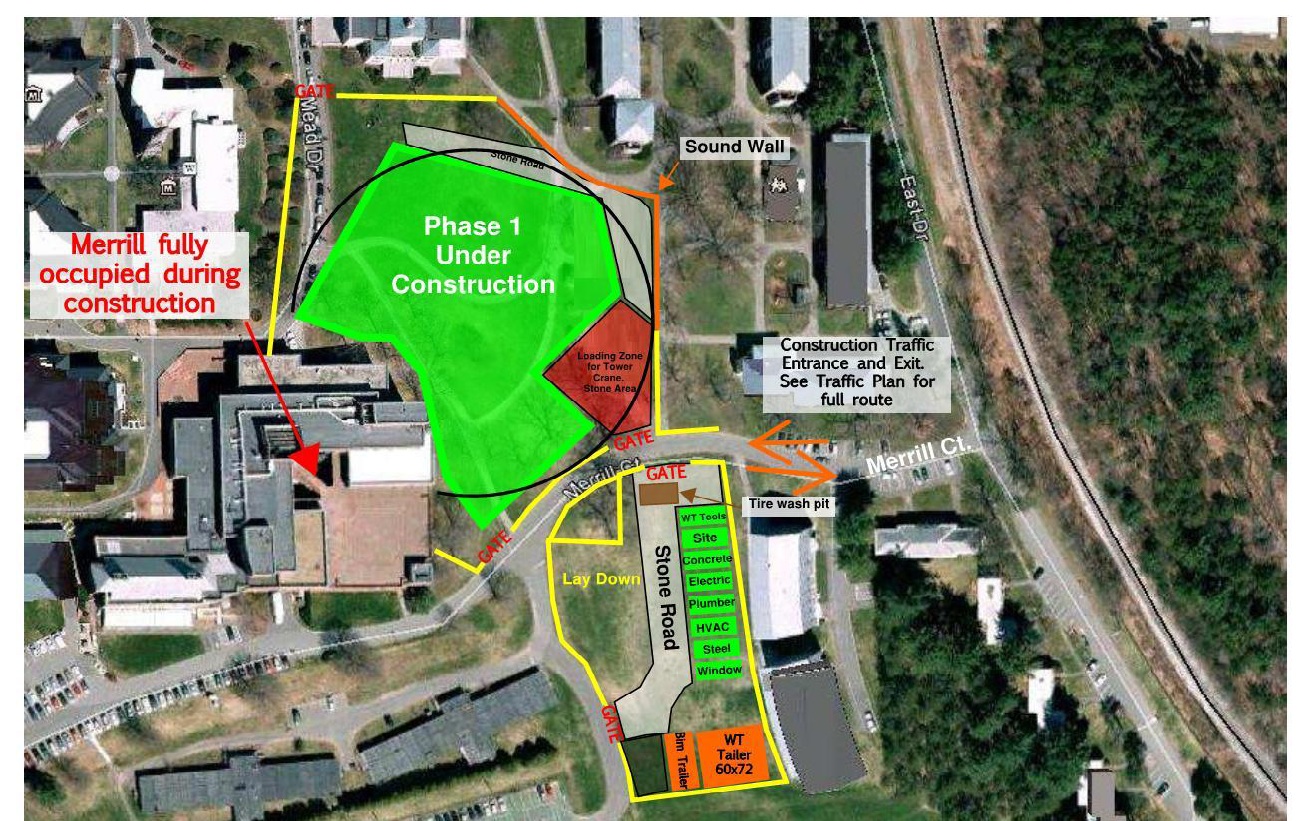

Room draw is upon the Amherst student body, and the factors that go into finding a good living situation for a coming semester have increased. In addition to attempting to find a centrally located single, perhaps in a suite with a common room, students now must also take into consideration the campus construction on the new science center that starts in earnest at the end of this school year.
“I’m a little nervous that the noise of the construction will affect my life negatively next year,” Ryland Webb ’15 said. “I like sleeping in on the weekends and I hope I won’t have to give that up.”
The construction site will occur primarily on the hill west of the social dormitories, between Keefe Campus Center and Merrill Science Center. The large amount of noise will be caused by the traffic of construction vehicles, according to Director of Design and Construction Tom Davies.
“Next year, there will be a lot of excavation, taking away the hill in large trucks,” Davies said. “Afterwards we will be bringing in the concrete.”
The construction vehicle traffic will go along down East Drive, located to the direct east of the social dormitories, and into Merrill Science Road. Coolidge Dormitory and Crossett Dormitory will experience the most amount of noise due to the traffic.
“We are talking about big trucks — you hear them,” Davies said.
The other dormitory that will bear the brunt of the noise is Pond Dormitory. Pond is the dormitory located closest to the actual construction site.
“The south and west sides of Pond will likely experience the most noise,” Davies said. “Construction vehicles and loud, and students will hear them beeping as they back up.”
There will not, however, be any pounding jackhammer noises.
“The hillside will just be dug out and hauled away,” Davies said.
The construction will start at 7:00 a.m. and go until around 4:00 p.m., although it could be later than that on some days, according to Davies. This will occur six days a week, with the only break of construction occurring on Sunday.
In order to mitigate this noise a sound-baffle-wall will be installed that will run across the sidewalk from Keefe to the Socials. This wall is expected to reduce the decibel levels by 10.
“Noise will still be heard, and it may still be objectionable, but that is the best we can do,” Davies said.
Davies expects the dormitories in the area, namely King Dormitory and Wieland Dormitory, to be affected far less than Pond, Coolidge and Crossett. While there won’t be any actual construction going on in front of King and Wieland, there will be a fenced off area that will contain temporary offices of the contractors. While it will not be as noisy, the fenced off area presents an obstacle that students will have to navigate around.
The new science center construction is currently in what Davies called “the enabling phase.” Underground utilities structures, such as water pipes and electrical wiring, that are in the footprint of the future building need to be reworked and rerouted.
There are currently around 15-25 workers on a typical day. This number will jump to 200-250 workers starting around June 3, when the digging phase starts. These workers will park off campus and be shuttled in past the Book and Plow Farm, arriving near the tennis courts.
After the digging phase ends, work will start on constructing the first part of the new science center. This is expected to be done December 2015, in time for use of the second semester of that school year. During this semester Merrill Science Center will be torn down and science classes will be held in the new science center. By March 2018 the second part of the building will be complete.
The new science center will house all sciences classes — except for geology, which will continue to operate in Beneski. The McGuire Life Sciences building will be repurposed. In addition, roughly 20 percent of all non-science classes will also be held in the new science center.
“The idea is to have non-science students in the science building as well, hopefully unifying the campus a bit more,” Davies said.